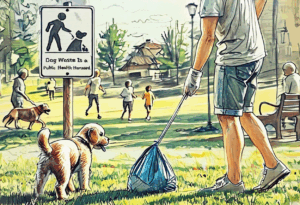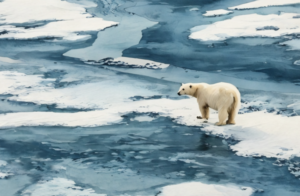
Everyone has been in a jewelry store during at least one point in their lives. Whether it be for a nice birthstone necklace for a friend’s birthday, a dazzling set of diamond earrings for Mother’s Day, or even a stunning watch made of sterling for your significant other, you’ve likely spent quite a bit of time choosing the perfect gift for any occasion.
But, maybe you didn’t want to get your loved one a silly old necklace, maybe you wanted to get them something more unique. Perhaps you noticed a bangle sitting in one of the display cases nearest the back of the store. It was unlike anything you’d ever seen before. The bangle, thinner than a banana peel but significantly stronger, was a beautiful amber with hints of coffee brown patches scattered across the piece. You bought it, not realizing what you actually bought into.
What if the jewelry you took a liking to was actually made of tortoiseshell? Real tortoiseshell?
Real tortoiseshell is torn off the backs of hawksbill sea turtles by poachers hoping to sell their carapaces—the backside of the shell fused to their spine—for a profit.
Hawksbills, known for their hawk-like beaks, are considered critically endangered by the International Union for Conservation of Nature (IUCN) because of the constant hunt for the beautiful pattern on their shells.
They’re not the only sea turtle species in the United States under threat, however. Six out of seven species reside here and are at varying risk of extinction, and it’s imperative we help them. We certainly can.
Let’s start with the celebrity species of sea turtle, the endangered Green. When one thinks of a turtle, their minds immediately generate their image.
Greens get their color and name from their primary consumption of green algae and seagrass.
Seagrass plants, which inhabit the seafloor of aquatic ecosystems, are responsible for providing dissolved oxygen (DO) to marine life in the area, allowing them to breathe. In order to create oxygen they require carbon dioxide, sucking the substance out of the water, which only enhances animals’ ability to breathe. In addition, the mere presence of seagrass provides shelter for an array of smaller creatures from fish to crabs, thus stimulating biodiversity that fisheries can take advantage of in order to increase the variety of consumer products.
Green sea turtles are responsible for maintaining the health of seagrass via a process called rotational grazing, in which they consume dead portions of the plant as well as reduce its biomass or the amount of organic material within it. By decreasing the weight of the seagrass, the Greens facilitate its ability to conduct photosynthesis, the process of absorbing sunlight to generate energy, which allows it to convert carbon dioxide from the atmosphere into oxygen.
Without seagrass, there would be a severe imbalance in oxygen supply and shelter for creatures, decreasing biodiversity crucial to humans as both a source of food and profit. And without Greens, seagrass would not be able to carry out its functions to the fullest extent, rendering it unable to support the majority of sea life, reducing a key source of food for humans.
Next, we have another species constantly thrust into the spotlight: the vulnerable Leatherback. The Leatherback is the largest of the turtles and the only member to lack a hard shell. Instead, their carapace is composed of seven bony ridges, hence the name “leather.”
Leatherbacks’ diet mainly comprises jellyfish, as they possess spines facing backwards that permits them to consume a greater amount of them than other turtles (NOAA Fisheries: Leatherback Turtle).
Without Leatherbacks to consume such high amounts of jellyfish, their numbers would skyrocket out of proportion, destroying the natural food chain with increased overconsumption of species like zooplankton and crustaceans.
Let’s return to our friend, the Hawksbill, shall we?
Hawksbills are essential to the life and growth of coral reefs. Since their main choice of food are sponges, which often compete for space the reefs need, they eliminate that competition, allowing the corals to have sufficient space to grow.
Coral reefs are prominent ecosystems. Acting as shelter and breeding grounds for a number of species, they propel biodiversity forward. Without them, there could be a potential reduction in certain species if unable to find a safe area to reproduce for the sake of human consumption.
Moving on, we have two turtles of the same genus, Lepidochelys: vulnerable Olive and critically endangered Kemp’s Ridleys. Olives were named for the color of their shells, while Kemps’ were named for the fisherman who discovered them, Richard Kemp.
The two species are considered similar with specific regard to their nesting habits, as females of each nest on beaches in groups called arribadas.
Kemp’s Ridleys are the smallest and considered the most at risk of extinction of any sea turtle species. Despite this, they carry out a similar ecological function to olives; like the Green and Hawksbill, they are useful to maintaining seagrasses as well as coral reefs.
Last but certainly not least, we have the vulnerable Loggerhead sea turtle.
Loggerheads were named for the immense size of their heads. However, that’s not their only advantage when it comes to size. They’re also known for their strong jaws, capable of breaking the tough shells of the creatures they consume, like whelks.
As they consume their prey, crushing them in their grip, important nutrients are released. These nutrients can then be reused to help maintain the balance of seafloor sediments (WWF: Loggerhead Turtle).
And while these turtles all have different contributions to the ocean, they’re all faced with the same threats that we can help put an end to.
One of the main threats is bycatch. Bycatch is when fisheries are attempting to catch fish in their nets or trawls and accidentally capture turtles in the process. Often, these nets are swung onto the deck to their heavy nature, resulting in extreme damage to their carapaces, leading to spinal damage that can contribute to the development of limb paralysis, or even immediate death.
So, if you’re off doing small-scale fishing, avoid nets and use fishing poles instead, as those reduce the risks of capturing a turtle. Also, you can purchase a Turtle Exclusion Device (TED) that can be placed within trawls or nets to allow sea turtles to escape if accidentally caught in the fishing process.
Another significant threat to sea turtles is pollution. When trash is left on beaches, more often than not, it’s blown into the ocean, making it easy for turtles to find and consume. The most common example would be plastic bags, which turtles can mistake for jellyfish due to their shape. Upon consumption, the bags can wrap around their intestines and kill them.
In order to prevent this, please dispose of your trash immediately after use. Or, if possible, bring reusable bags and food packaging, such as non single-use plastic containers, to the beach.
Sea turtles are also heavily threatened by boat strikes. When a boat hits a turtle, this could result in the development of an air bubble between their carapaces and their spines, causing a buoyancy disorder. Buoyancy disorders inhibit a turtle’s ability to dive into deeper waters in order to forage for food, severely limiting their access to food sources.
When out boating, ensure you’re following the speed limits designated for that area. Also, using the Sea Turtle Spotter map will help you know the most common locations turtles cluster in so that you can avoid those areas.
Sea turtles are considered keystone species, meaning that if their numbers are impacted on an even greater scale, the result could be the damage of entire ecosystems, an effect that would eventually transfer onto us.
Save the sea turtles!




